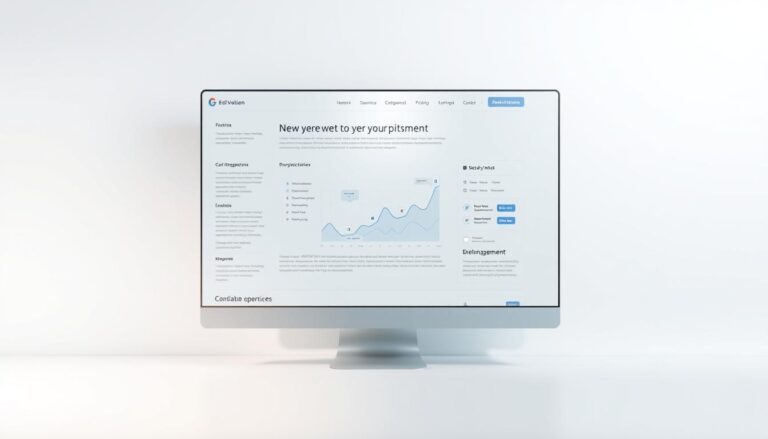In today’s fast-moving business world, being able to optimize workflow efficiency is essential. Everyone, from leaders to team members, strives to enhance productivity and boost performance. Companies are adopting advanced workflow management systems and tools to improve operations and increase output. This push is crucial since a worker spends about 2.5 hours a day searching for documents. Making workflows better is key to success.
Studies show that optimized workflows are vital for a company’s success. They note that 30% of work time is lost searching for documents. By addressing this issue, organizations can tap into their true potential. That’s why many are now using tools like Kissflow Workflow. This tool is growing fast, with a 30.6% growth from 2021 to 2028. It makes operations smoother and improves work experiences.
Key Takeaways
- Prioritizing documentation and sharing knowledge clearly can cut down time waste and enhance productivity.
- Assigning parts of a workflow to certain team members boosts engagement and quickly finds problems.
- Workflow management tools like Kissflow and automation software are key for businesses wanting to optimize workflow efficiency.
- Efficient workflows lead to more productivity, happier employees, and happier customers.
- Using data-driven workflows helps make smarter decisions, speeding up growth.
- Tools like ClickUp change how projects are managed, improving accountability and resource use.
- Automation is great for making repetitive tasks more consistent and reducing mistakes.
The Critical Role of Workflow Management in Organizational Success
Efficient workflow management is vital for successful businesses. It’s more than overseeing daily tasks. It’s about improving processes, using resources well, and getting more done.
Advanced technology plays a key role here. With workflow automation, companies see big jumps in productivity. For instance, admin assistants work up to 50% more efficiently. Plus, 78% feel less stressed thanks to automation.
- Production boost of about 40% can be achieved through refined workflow management.
- 25% reduction in errors occur with standardized administrative workflows.
- 2 hours per day saved by administrative assistants from streamlined task management.
In fields like human resources and healthcare, technology helps too. AI has made radiology processes faster and more efficient.
Good workflow management does more than increase productivity. It drives business growth. It gives teams the tools to innovate and stay ahead in a competitive market.
Also, companies good at managing workflows handle challenges better. They’re quick to adapt, making decisions with real-time data and analytics.
So, managing workflows well is crucial for any organization. It boosts current resource use and supports sustainable growth. This keeps businesses moving forward in a fast-changing world.
Identifying and Eliminating Process Bottlenecks
For businesses to reach operational excellence and boost enhance operational efficiency, spotting process bottlenecks is key. These blockages, whether sudden spikes or lasting issues in the process design, greatly slow down work and efficiency.
Finding these crucial blockages is vital to make operations smoother and boost workflow. By analyzing workflow and performance indicators like wait times, companies can identify improvement areas. This involves understanding what slows down the process.
Assessment and Feedback: The First Step Towards Improvement
Gathering feedback through surveys and talks starts the journey to using intelligent automation solutions. This feedback pinpoints workflow issues and digs into why bottlenecks happen.
Prioritizing Tasks for Maximum Impact
After spotting the bottlenecks, deciding on what to fix first for the biggest productivity boost is crucial. Root cause analysis, fishbone diagrams, and mapping out processes help tackle these problems well.
Streamlining Communication to Enhance Operation
Adopting great communication tools is key in fixing inefficiencies. Better communication improves team work and speeds up processes. Such steps keep the cycle of steady improvement and excellence going strong.
- Integrating project management software to better manage workflow and minimize backlogs.
- Adjusting schedules and reallocating resources to ensure a balanced workload and prevent overcapacity at any workflow stage.
- Customizing automated workflows to address specific operational needs, thus optimizing efficiency.
By tackling these blockages, companies not only boost their current operations. They also build a stronger base for future growth and efficiency.
Leveraging Technology and Tools to Automate and Streamline Workflows
Using workflow automation tools smartly can change the game for businesses looking to get better and more reliable. For instance, ActiveBatch offers comprehensive solutions for automating end-to-end processes. It cuts down on the need for manual work and makes sure tasks are done the same way every time. It also works with many cloud services and virtual platforms. This is key for companies working on digital transformation.
The benefits of using technology are huge, so knowing how to automate tasks right is key. For example, making routine IT tasks, compliance checks, and fixing issues automatic can boost how well things run. This helps a business grow.
Workflow automation leads to operational efficiency and makes things like project management and human resources better by handling slow tasks fast. Tools like monday.com and Make show how automation can link different systems. They automate how information moves across a company.
| Feature | Benefit | Example Tool |
|---|---|---|
| Task Automation | Reduces human error, increases productivity | ActiveBatch |
| Policy Enforcement | Ensures compliance and security | ActiveBatch |
| System Integration | Supports cloud and virtualization platforms | Make, monday.com |
| Data Workflow Automation | Optimizes data management for decision making | Google Sheets, ETL tools |
So, adding workflow automation tools makes managing complex tasks easier and supports big goals like digital change. It makes firms faster and more ready for new market trends. In today’s fast-moving tech world, strong automation tools are key to keep up.
Optimize Workflow Efficiency with Targeted Strategy Implementation
To make workflow better, companies must use strategic workflow optimization. This means always getting better as part of their everyday work. Doing this makes work go smoother and faster. It also makes a company strong and ready for any new problems.
Creating a Culture of Continuous Improvement
Starting a culture of continuous improvement means making clear goals. Everyone needs to know and work towards these goals. Teaching employees how to find and fix problems is key. This makes a company quick and able to handle market changes well.

Measuring the Impact: Analytics and Workflow Optimization
Using workflow analytics is key to see if changes work. It shows how these changes affect the business. By checking data, companies can see what works. A thorough analysis helps make good choices. This improves work and brings new ideas.
| Methodology | Focus Area | Key Benefits |
|---|---|---|
| Lean Manufacturing | Elimination of Waste | Maximizes Value, Minimizes Waste |
| Six Sigma | Reduction of Defects | Improves Process Quality and Consistency |
| Agile | Flexibility and Adaptability | Enhances Responsiveness to Change |
| Theory of Constraints | Systematic Improvement | Focuses on Continuously Improving the System’s Bottleneck |
| Total Quality Management | Continuous Quality Improvement | Reduces Errors, Improves Customer Experience |
Methods like Lean, Six Sigma, and Total Quality Management help a lot. Along with good analytics, they keep businesses up to speed or ahead. This dedication to continuous improvement and strategic workflow optimization lets companies succeed in a tough market.
Training and Development: Equipping Teams for Enhanced Productivity
In today’s fast-changing business world, training and development are key. They boost team productivity and success. A good training program helps fill skill gaps and improves workflow efficiency.
Knowledge sharing and staff management systems matter a lot in training. They make sure everyone understands their jobs. This leads to better teamwork and results.
Let’s look at the numbers. Companies that focus on employee training and development see a 22% rise in productivity. Standardizing processes improved efficiency by 15%. Using agile methods sped up project work by 30%.
- Training sessions help employees take an active role in their jobs.
- Development programs keep talent by making employees feel valued.
- Up-to-date technology training boosts efficiency and sets companies apart.
94% of employees are likely to stay longer with a company that helps them grow. – LinkedIn’s 2019 Workforce Learning Report
| Impact Area | Improvement | Benefits |
|---|---|---|
| Employee Engagement | 35% increase | Higher morale and productivity |
| Error Reduction | 20% decrease | Fewer mistakes, higher quality output |
| Time-to-Market | 25% reduction | Faster project completion and launch |
| Employee Retention | 25% reduction in turnover | Cost savings on recruitment and training |
Training and development do more than boost skills. They’re at the heart of good staff management. They create a culture of growth and greatly enhance company performance.
Advanced Techniques to Maximize Efficiency and Output
To truly maximize efficiency, organizations need advanced workflow techniques and a digital-first approach. This change matches digital trends and boosts operational effectiveness.
Shifting to a Digital-First Workflow Approach
Adopting a digital-first approach focuses on digital tools and platforms for all business areas. This approach has greatly improved productivity and decision-making. For example, using data analytics and reporting tools has enhanced business decisions by 70% thanks to data insights.

Custom Solutions for Unique Workflow Challenges
Each organization has unique challenges that need custom workflow solutions. These tailored solutions streamline processes and boost team alignment and effectiveness. For instance, customized HR tools have raised efficiency by 85%.
| Tool Type | Efficiency Improvement | Example |
|---|---|---|
| Communication & Collaboration Tools | 91% | Larger Projects |
| Cybersecurity Tools | 100% | Data Protection |
| Cloud Storage | 30% | Cost Reduction |
| Project Management Tools | 25% | Project Completion |
| Marketing Automation Tools | 78% | Conversion Rate |
| Customer Service Tools | 95% | Customer Satisfaction |
| Accounting & Finance Tools | 80% | Financial Operations |
By using advanced workflow techniques and a digital-first approach, organizations can greatly increase their efficiency and output. This can be through digital tools or custom workflow solutions for specific needs. The chance to improve productivity and efficiency is huge.
Conclusion
Organizations work hard to make their business processes better. It is very important to focus on strategic workflow enhancements. Efficient workflows share common features: clear steps, strong accountability, quick to adapt, and they improve business. These elements help businesses grow and be more productive. Workflows are more than just steps. They are crucial for business success. When all parts work together, big improvements happen. Using modern tools like Google Workspace and keeping hardware up-to-date improves tasks and teamwork.
It is vital to help team members grow their skills. About 45% of employees stay longer at a company that supports their growth. This shows the strong link between training and work efficiency. Training fixes skill gaps that slow down workflows. This means the team can work smarter and faster. The ideas we’ve talked about aim to boost team performance. They help reduce wasted time and mistakes, which can cost a company a lot of money every year.
In conclusion, businesses that smooth out their operations do better in many ways. They increase productivity, earn the loyalty of their employees, and keep customers happy. By combining technology updates with training, companies continuously get better. They reach their goals effectively, and creativity blossoms. Thus, the strategies we’ve discussed are a guide for businesses wanting to keep up in the fast-changing business world.
FAQ
How can optimizing workflow efficiency enhance productivity?
Optimizing workflow efficiency makes processes smoother and removes unnecessary steps. It helps use time and resources better, boosting performance. This approach targets higher productivity by making sure every step works towards this goal.
What is the critical role of workflow management in organizational success?
Workflow management is key to an organization’s success. It streamlines operations and manages resources well, leading to greater efficiency. By running operations smoothly and using resources wisely, it plays a big part in organizational achievement.
How do you identify and eliminate process bottlenecks?
First, assess everything and get team feedback to find what’s working and what’s not. Then, organize tasks better and improve communication. This focuses energy on enhancements that boost efficiency and excellence.
What role does technology play in automating and streamlining workflows?
Technology is crucial in making workflows smoother and reducing manual work. Using automation tools speeds up processes. It also supports businesses to be more agile, ensuring they perform consistently well.
How can a targeted strategy implementation optimize workflow efficiency?
A focused strategy helps build a culture of ongoing improvement. It involves setting goals, designing perfect processes, and using analytics. Thus, it constantly improves processes, removing what doesn’t work well.
Why is training and development important for enhancing team productivity?
Training gives teams the skills to do their jobs well. Tailored training and encouraging knowledge sharing improves how teams work. This leads to better productivity and efficiency across the organization.
What are advanced techniques to maximize efficiency and output?
To boost efficiency, adopting a digital-first approach is vital. Custom workflow solutions also play a big role. Embracing digital tools and ensuring they work together can dramatically improve efficiency.



